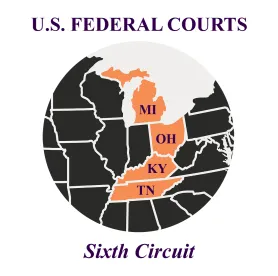A recent decision from the Western District of Kentucky wound its way through a maze of permissible purposes and reasonable beliefs, with a detour into defamation claims, ultimately striking half of plaintiff’s claims. In Durbin v. Americredit Fin. Servs., No. 1:19-CV-00184-GNS, 2020 U.S. Dist. LEXIS 101554 (W.D. Ky. June 9, 2020), the court found that plaintiff sufficiently pled a claim under the Fair Credit Reporting Act (“FCRA”), but struck defamation claims under dueling preemption provisions. Plaintiff unsuccessfully defended his defamation claims by arguing that defendants, who plaintiff claimed had knowingly furnished inaccurate information, were not in fact “furnishers” under the preemption provisions.
Plaintiff had purchased a car from a dealer under a retail installment contract and security agreement (“RICS”) that allowed the dealer to assign the RICS to a credit union. Plaintiff later found out the credit union had rejected the RICS, requiring the dealer to find new financing, and discovered that each of seven named defendants had obtained his credit report, generating “hard inquiries” in each case.
Defendants asserted they had a permissible purpose in obtaining plaintiff’s credit report because they reasonably believed plaintiff was looking for an extension of credit. The court, however, disagreed, finding that plaintiff had sufficiently pled that defendants’ belief was not reasonable. Why? The RICS in question was a contract for a vehicle purchase, not a credit application – and it didn’t look like plaintiff had ever filled out a credit application. As the court found, the burden of proof was on defendants to justify their reasonable belief that plaintiff was seeking credit. Lacking such proof, the court allowed plaintiff’s FCRA claims to proceed.
Plaintiff’s defamation claims did not fare as well. The defamation claims were based on defendants falsely furnishing information to the consumer reporting agencies (“CRAs”) that plaintiff had initiated a credit transaction. On that basis, defendants asserted the defamation claims were preempted under two provisions of the FCRA, § 1681h(e) and § 1681t(b)(1)(F). As the court noted, these provisions “have been the source of much debate.” Section 1681t(b)(1)(F) grants immunity to furnishers from state law claims when fulfilling their obligations as furnishers to CRAs under § 1681s-2. Section 1681h(e) is narrower, and immunizes furnishers from state law claims of defamation, slander, or invasion of privacy, except in cases where a consumer claims false information has been furnished with malice or willful intent to injure the consumer.
So how were these two sections balanced? The court ultimately applied a “temporal approach,” one of three possible methods of interpreting the two preemption provisions. Under this approach, § 1681t(b) is interpreted to preempt state law claims that relate to the furnishing of disputed information once the furnisher knew or had reason to know of any inaccuracies, and § 1681h(e) is interpreted to preempt state law claims brought before the furnisher knew or had reason to know of an inaccuracy. The court found that plaintiff’s claims were preempted under § 1681t(b)(1)(F), because plaintiff had alleged that the defendants furnished information that they knew or should have known was false. Plaintiff’s unusual defense against this finding was that the defendants were actually users of credit reports under the FCRA. The court put it best: plaintiff “is suing for Defendants’ furnishing of information while simultaneously arguing that Defendants cannot be considered a furnisher of information.”
An interesting point here- the plaintiff was right: in obtaining a credit report and thus generating an inquiry, the defendants were not acting as furnishers, but only as users. Had plaintiff’s claimed been drafted in such a way as not to characterize the defendants’ activity as “furnishing” (and this raising the preemption defense), his claim may very well have survived the motion to dismiss.
This case shows the importance of being able to demonstrate a reasonable belief as a defense – it can’t simply be claimed. And furnishers beware: while this court adopted one approach for preemption, it also considered two other distinct approaches that other courts have adopted. Your (preemption) mileage may vary.




 />i
/>i

